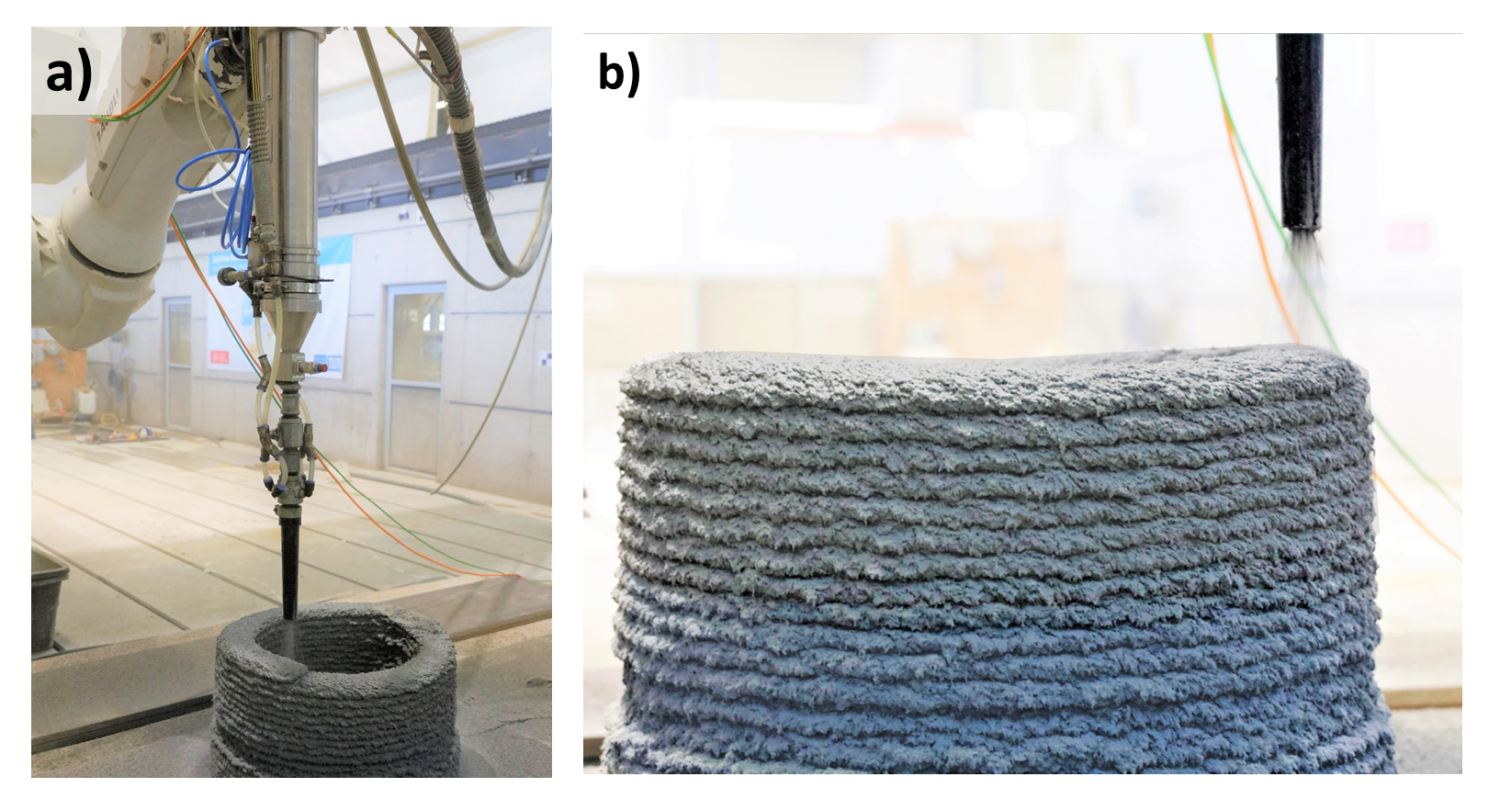Research Summary Report of A04
Integrated Additive Manufacturing Processes for Reinforced Shotcrete 3D Printing (SC3DP) Elements with Precise Surface Quality
[11.11.2022]
Freund, Niklas; doctoral researcher, n.freund@ibmb.tu-bs.de
Lowke, Dirk; project leader, d.lowke@ibmb.tu-bs.de
all: TU Braunschweig, Institute of Building Materials and Concrete Construction and Fire Safety (iBMB)
Project A04 investigates cooperative Additive Manufacturing (AM) processes based on Shotcrete 3D Printing (SC3DP) for the production of material-efficient, force-optimized, reinforced, load-bearing concrete components with precise surface quality and high geometric precision. The goal is to produce large-scale concrete elements using significantly lower amounts of reinforcement and concrete as compared to standard concrete construction principles.
Summary
In SC3DP applications, the precise control of rheological material properties represents a necessity. Here, data based rheological material models are required that allow the offline process planning as well as an active online control with respect to the present material properties and material-process-interactions. The aim is to manufacture reproducible material strands with accurate geometries and a sufficient structural build-up while enabling a proper bond between the deposited layers. For this reason, the existing SC3DP set-up was upgraded with an active mixing nozzle.
Current state of research
In order to actively control the rheological material properties in SC3DP, two approaches are possible: i) the adjustments of material properties at the mixer by the recipe and ii) the adjustments of material properties at the nozzle, e.g. by adding additives.
Material adjustments at the mixer (strategy i)) aim primarily to control the yield stress and the point in time when the material sets. Due to the pumping process, a high yield stress and a high thixotropic structural build-up directly after mixing is associated with high risks of blockages in the hose, especially in the case of process interruptions. Therefore, this strategy is considered to be less favorable.
The control of the material’s structural build-up at the nozzle (strategy ii)) can be done in various ways, e.g. by spraying accelerator into the material jet, which was proven to be very effective. However, this approach does not exploit the full potential of concrete technology since inhomogeneities in the printed material may occur. Hence, this approach can be optimized with regard to increase the homogeneity of material properties. For this reason, the current SC3DP-unit was upgraded by an active mixing nozzle, see Figure 1a. This mixing unit not only increases the homogeneity of the material to be printed, but also allows the adjustment of the material mix by dosing chemically and physically acting additives as well as additional material flows directly at the nozzle. Thus, it significantly extends the possibilities of homogeneous online setting control while increasing the safety of the process at the same time.
In order to exemplarily visualize a change in material composition in the printing process, Figure 1b illustrates a reduction of pigment content over the component height during the SC3DP process.










